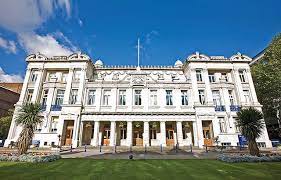Researchers use Instagram to support sea turtle conservation
A team of Researchers from Queen Mary University of London, together with collaborators from the Czech Technical University in Prague, sourced images of the turtles from Instagram through data mining. They then created a mathematical model to quantify the intensity of wildlife viewing on this endangered species.
Dr Kostas Papafitsoros, Lecturer in Mathematical Data Science, said: “Tourism and social media combined can place considerable pressure on vulnerable animals and the adverse impacts of social media on wildlife have been widely documented. With the increased demand among tourists to capture and share coveted photos of charismatic animals, loggerhead sea turtles are some of the biggest victims. But now we have shown that social media can also be a useful tool to measure the pressures of tourism on wildlife.”
The researchers’ central idea was that the more often an individual animal appears in social media the more viewing pressure it is subjected to. By creating a mathematical model to quantify this flow of images, they were able to answer question like: how did the viewing pressure on the loggerhead turtles of Zakynthos change across multiple years (i.e. from June 2019 to June 2020)? What about first week of August 2020 versus first week of August 2021, when tourism is at its peak on this mass tourism island?
Dr Gail Schofield, Lecturer in Aquatic Ecology at Queen Mary, said: “With 80% of social media users uploading their photos within two days, this allows conservationists to mine data in real time and act quickly if intervention is required. With little to no overheads, this is an accessible model for measuring the impact of tourism that smaller NGOs and grassroots conservation projects can use.”
By comparing data sets from 2019, 2020 and 2021, the researchers were able to test their model over a period where tourism levels fluctuated enormously due to the COVID-19 pandemic. The temporal fluctuations in tourism correlated with the number of images being uploaded to Instagram during the same period, proving the effectiveness of this mathematical model to measure impact of tourism on wildlife viewing. As expected, the COVID-19 pandemic reduced the tourist pressure on turtles, with the overall pressure during 2020 just 25% of that of 2019, rising to 50% in 2021.
Dr Papafitsoros said: “Tourism in Zakynthos peaks in August, which is towards the end of this species’ breeding season and a time where many female turtles would have laid their eggs and left the island. With the total population of loggerheads decreasing as the demand for photos increases, the impact of tourism becomes greater upon certain individuals. Indeed, some of these individuals have suffered lethal propeller injuries as a result, and we now hope that our methods will help prevent this in the future.”
Individual Loggerhead turtles are easily identifiable thanks to their unique markings. This presents an opportunity for conservationists to use social media images to measure the impact of tourism on individual creatures or groups of turtles. Wildlife conservation projects are increasingly using large scale imaging datasets to answer important ecological questions, and most of these projects crucially rely on Photo-Identification (Photo-Id).
This is the process of identifying individual animals by their unique external morphological patterns (e.g., stripes in zebras and facial scales in sea turtles). However, the process of identification is often hindered by the low-quality images due to bad lighting conditions, large distances between animals and cameras, and elusive individual animals. The next step for Queen Mary’s research team is to develop artificial intelligence methods to enhance low quality images of individual animals, thus facilitating their identification.
Social media is undeniably in part responsible for the increased interaction between humans and wildlife, but when harnessed correctly by conservationists, it offers a unique insight into these interactions which can inform policy and decision making moving forward.

